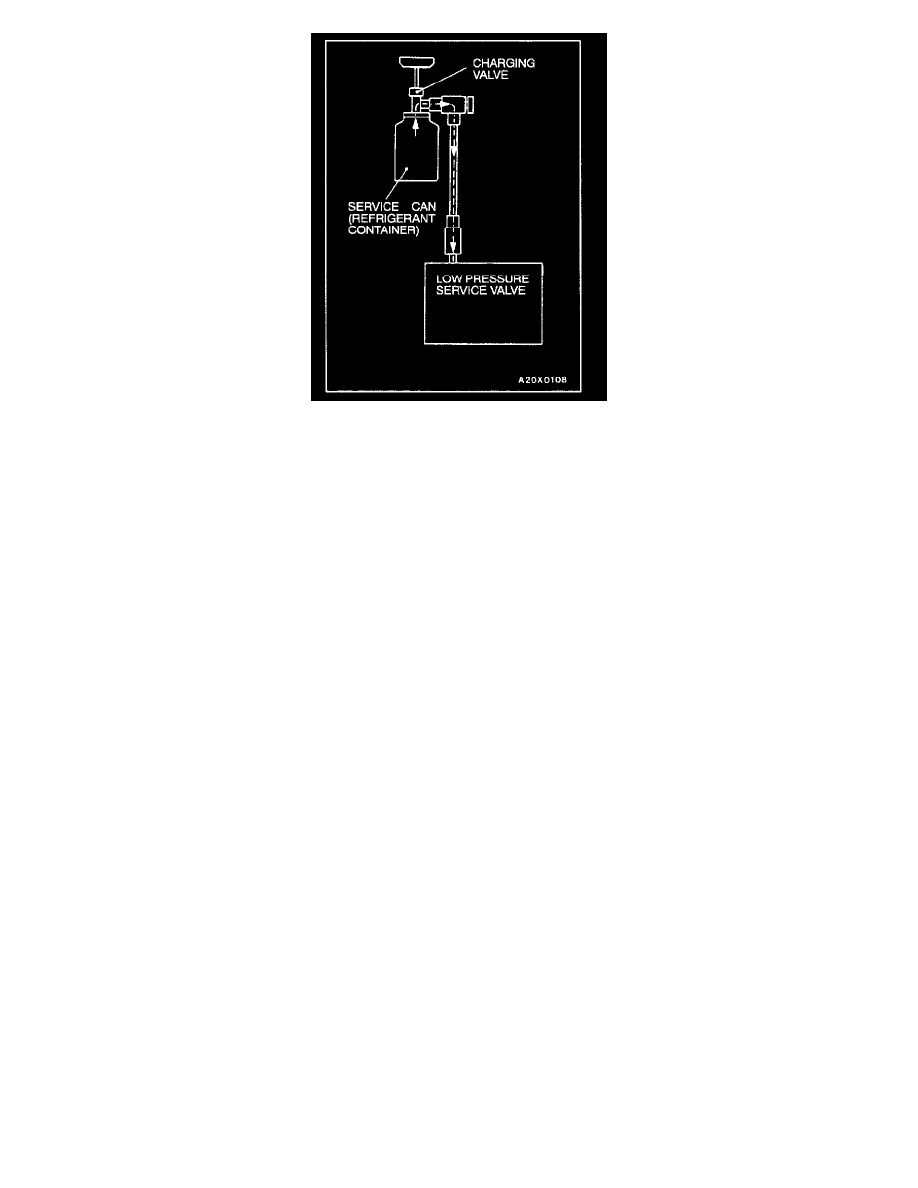Eclipse RS L4-2350cc 2.4L SOHC MFI (2002)

4. Turn the handle of the charging valve back (valve open) and tighten the handle of the adaptor valve (valve open) to charge the system with
refrigerant.
CAUTION: If the service can is inverted, liquid refrigerant may be drawn into the compressor damaging it by liquid compression. Keep the
service can upright to ensure that refrigerant is charged in gas state.
5. If the refrigerant is not drawn in, turn the handle of the adaptor valve back all the way (valve closed).
6. Check for gas leaks using a leak detector.
If a gas leak is detected, re-tighten the connections, and then repeat the charging procedure from evacuation in step 12..
CAUTION: A leak detector designed for R-134a should be used.
7. Start the engine.
8. Operate the A/C and set to the lowest temperature (MAX. COOL).
9. Fix the engine speed at 1,500 rpm.
10. Tighten the handle of the adaptor valve (valve open) to charge the required volume of refrigerant.
CAUTION: If the service can is inverted, liquid refrigerant may be drawn into the compressor damaging it by liquid compression. Keep the
service can upright to ensure that refrigerant is charged in gas state.
11. After charging with refrigerant, turn the handle of the adaptor valve back all the way (valve closed).
12. Tighten the charging valve handle (valve closed). Remove the quick joint (for low pressure) from the low- pressure service valve.
NOTE: If the service can is not emptied completely, keep the handles of the charging valve and adaptor valve closed for the next charging.
Using Refrigerant Recovery and Recycling Unit
System Charging
NOTE: Refer to that Refrigerant Recovery and Recycling Unit Instruction Manual for operation of the unit.
CAUTION: Air conditioning refrigerant or lubricant vapor can irritate your eyes, nose, or throat.
Be careful when connecting service equipment.
Do not breathe refrigerant or vapor.
Use only service equipment that is U.L.-listed and is certified to meet the requirements of SAE J2210 to remove HFC-134a (R-134a) from the air
conditioning system.
If accidental system discharge occurs, ventilate work area before resuming service.
Additional health and safety information may be obtained from the refrigerant and lubricant manufacturers.
